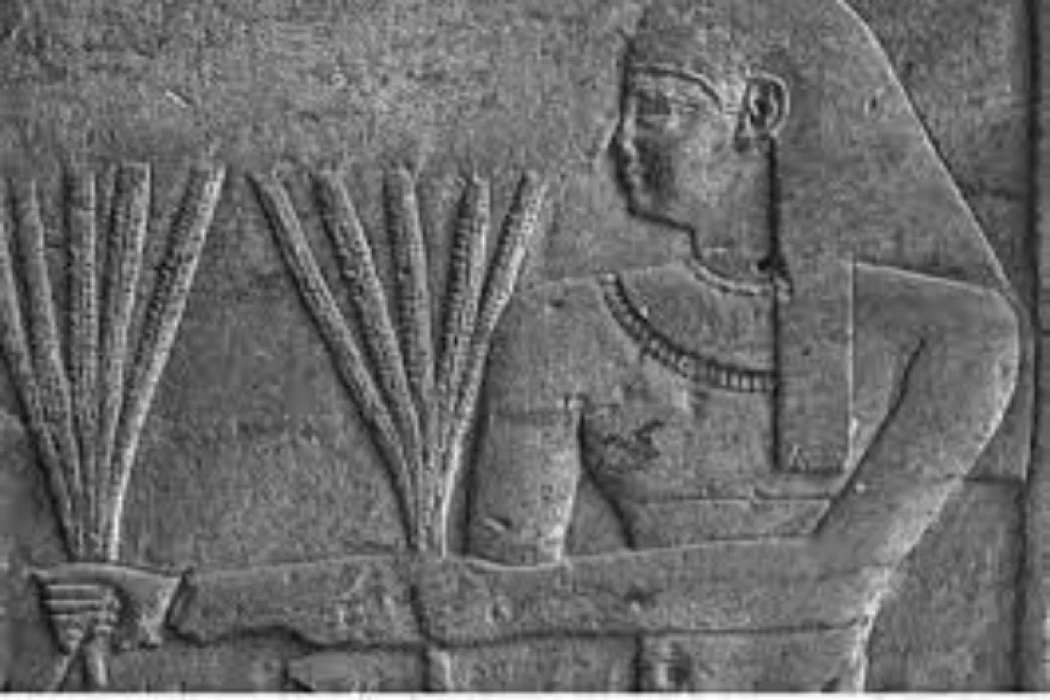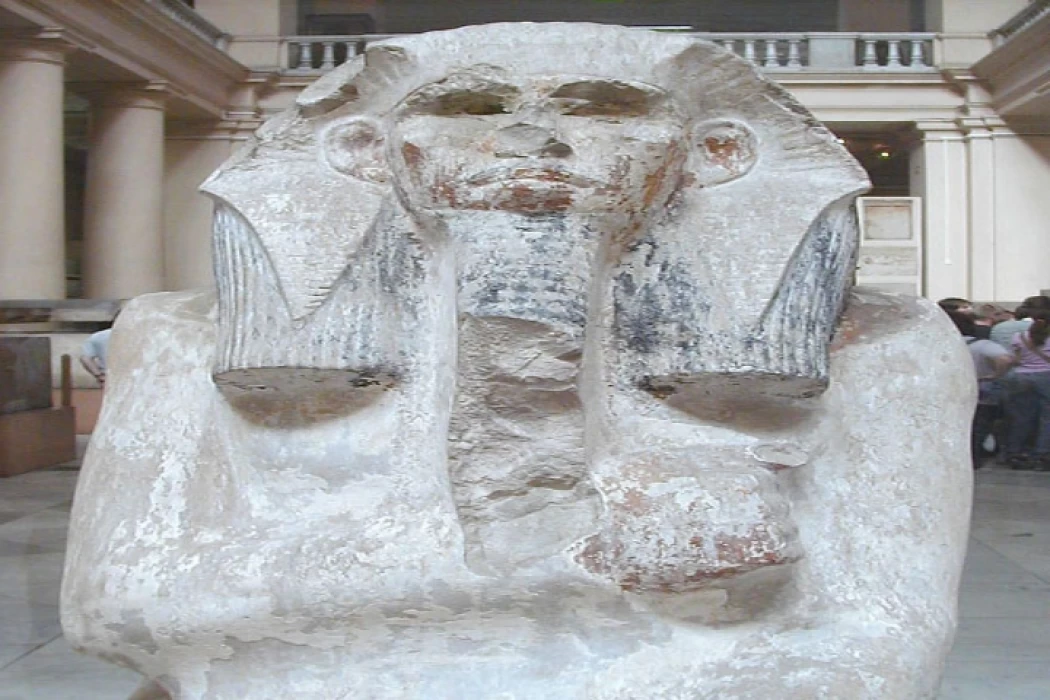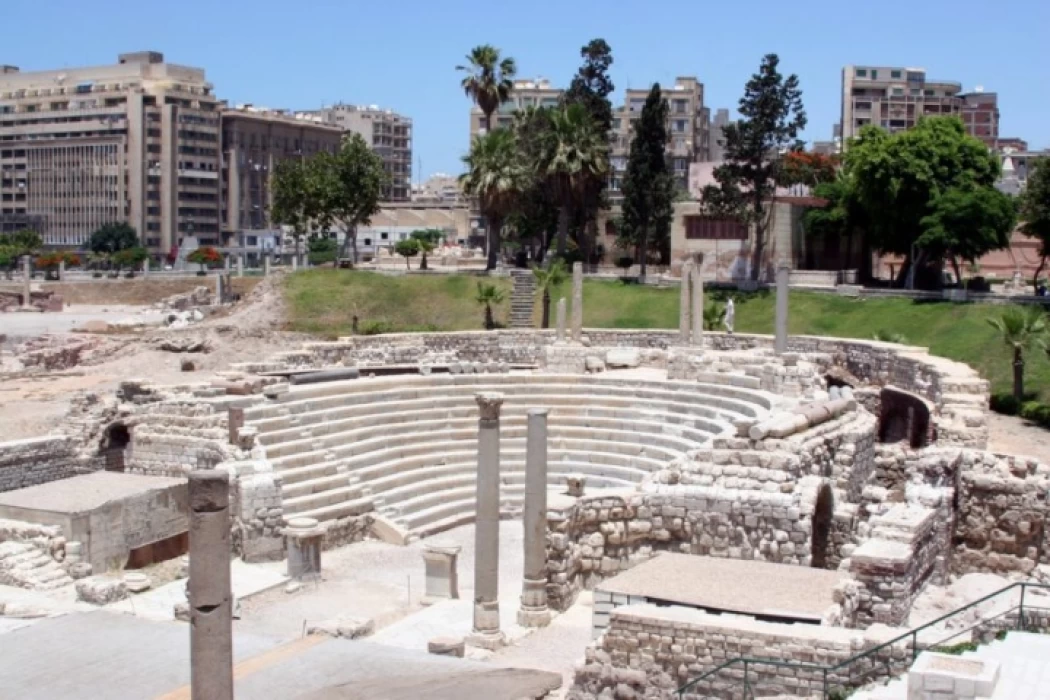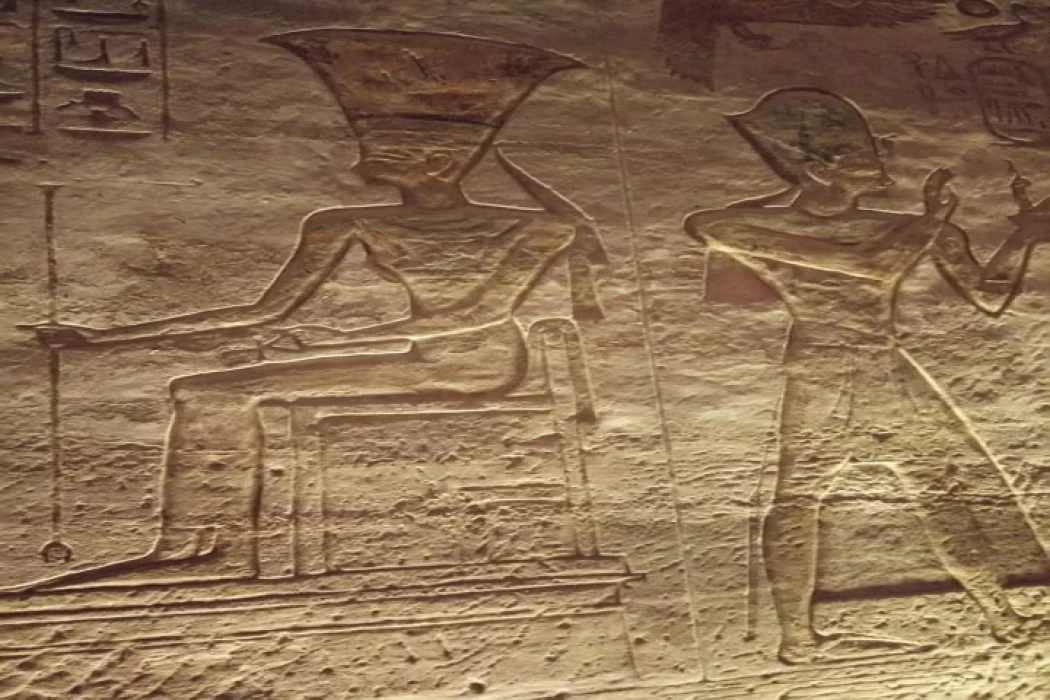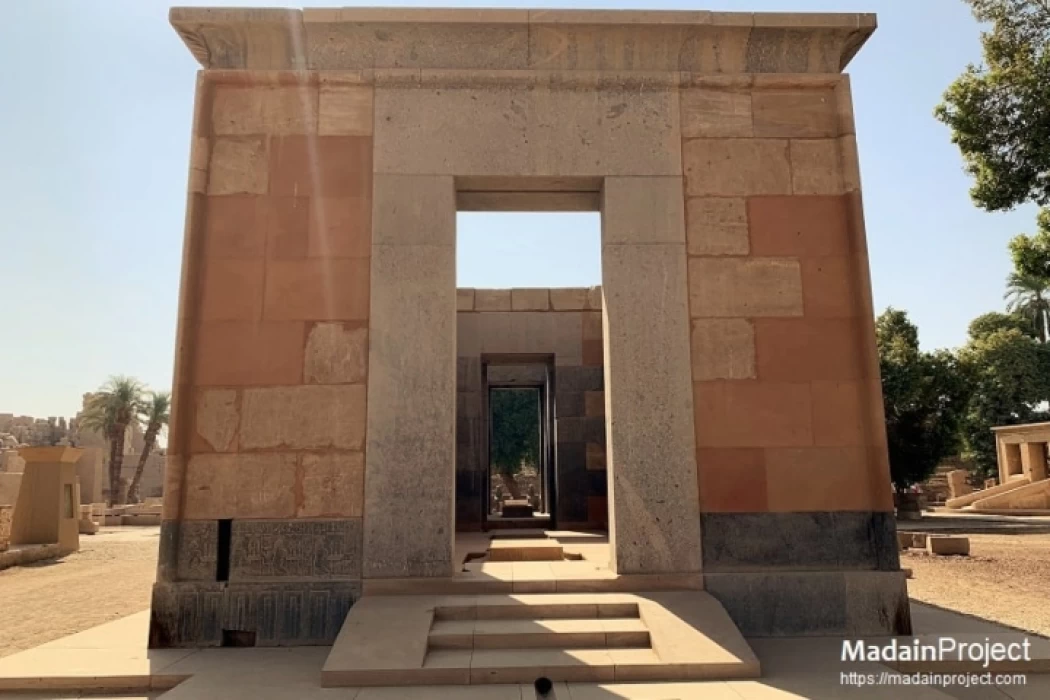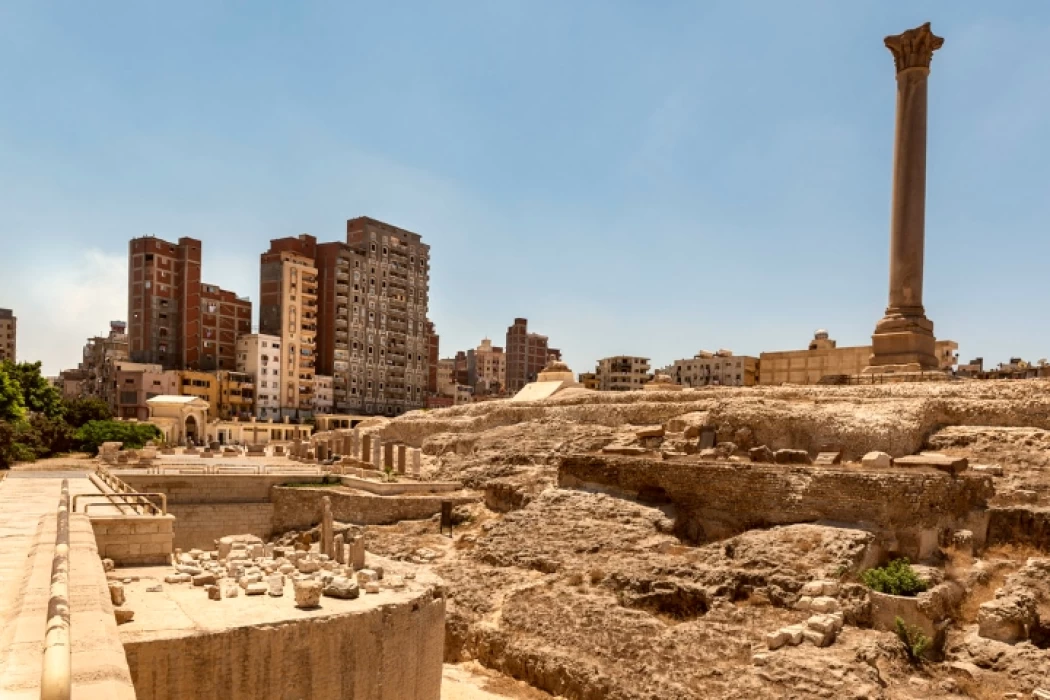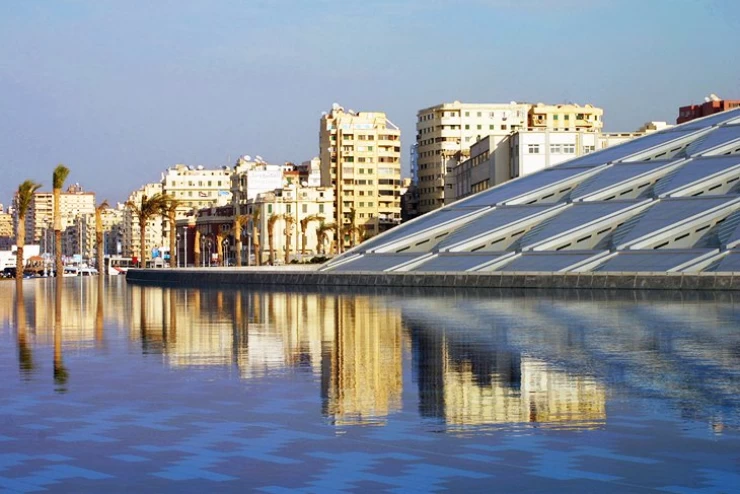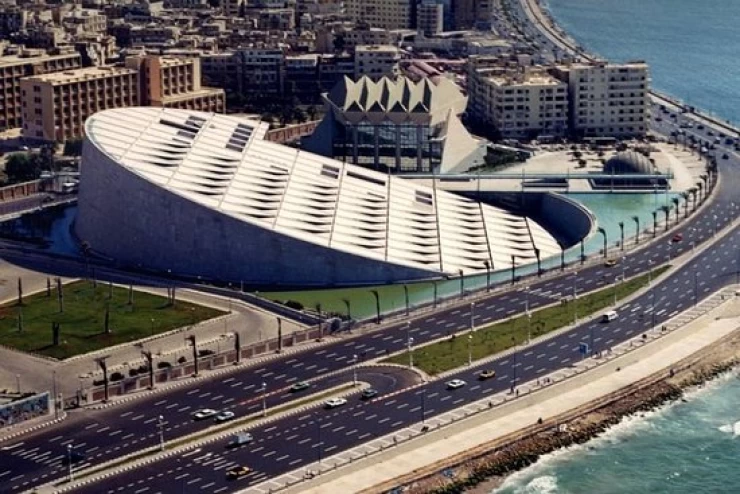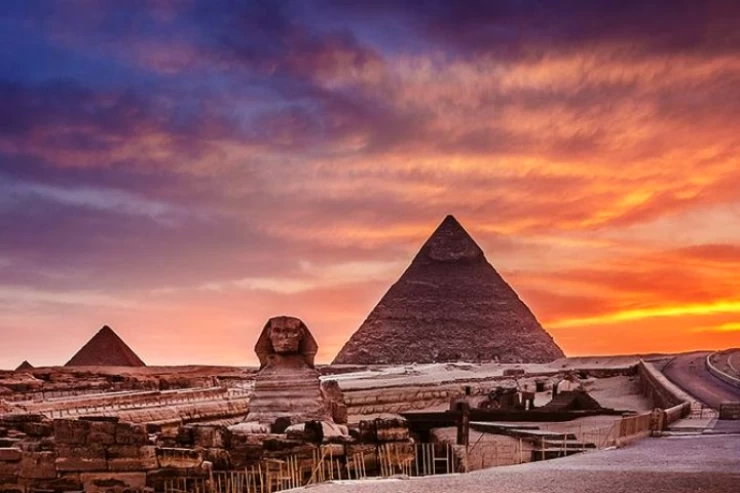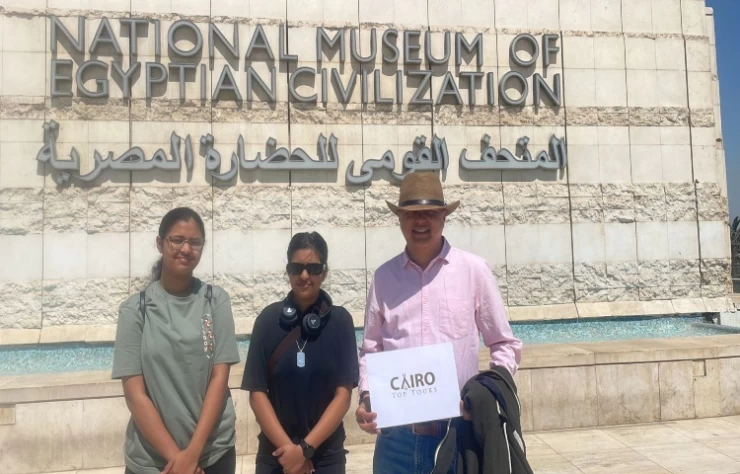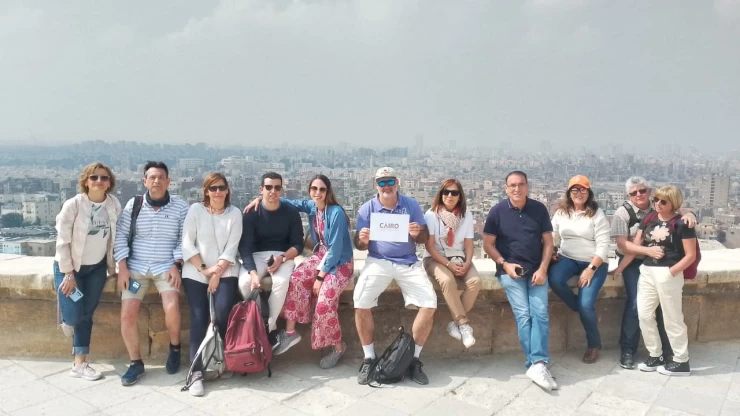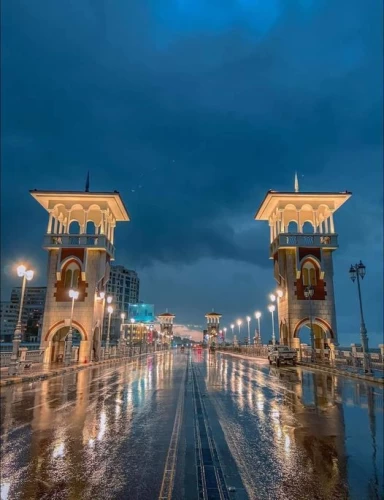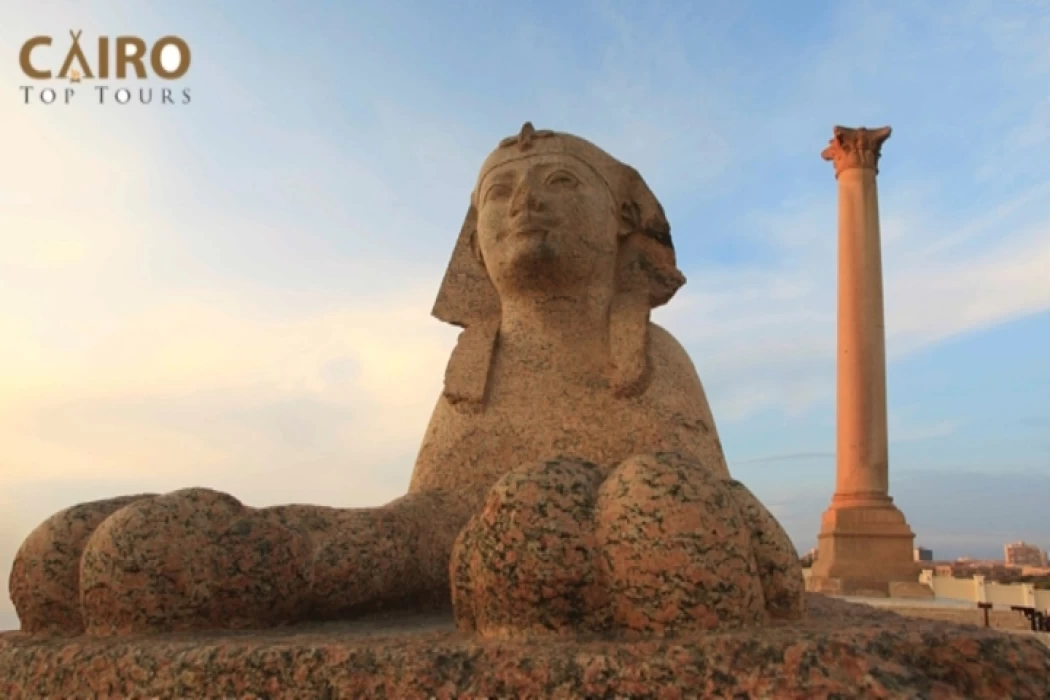
Pompey's Pillar
The sawari column is an ancient Roman column located in the city of Alexandria in Egypt, and is one of the most famous monuments in it. It was erected on top of Bab Sidra Hill, between the area of the current Muslim burials, known as the column tombs, and the Kum Al-shaqafa archaeological plateau. It reaches a length of about 27 meters and is made of red granite stone. It was erected in memory of Emperor Diocletian in the III century AD. It is the last surviving relic of the Serapeum temple erected by Postumus. The exact date of construction of this column has not been determined, but it dates back to the Roman era, and it was said that this column was dedicated to Christianity after its victory in Alexandria over Miriam in the Battle of the shirt the Mast Column is the fifth tallest monument as a Roman victory column after Trajan's column (35.07 m).
The column's name dates back to the Arab era, where it is believed that it came as a result of the height of this towering column among 400 other columns, which resembles the masts of ships, and therefore the Arabs called it the last column, which was later converted to the mast. This error is because some Europeans thought that the head of the Roman commander Pompey, who fled to Egypt to escape Julius Caesar and was killed in Egypt, they thought that his head was placed in a precious funeral urn and placed above the crown of the column
The body of the column is a single piece with a diameter of 2,70 meters at the base and 2,30 meters at the crown. The total height of the column, including the base, is about 26.85 meters. On the western side of the column are two bases accessible by an underground staircase and there are two similar sphinxes made of pink granite dating back to the era of Ptolemy VI. On one of them is an inscription of King Poplar-lover of the XVIII dynasty.
Described by the Muslim traveler Ibn Battuta when he visited Alexandria in 1326, he said:
"One of the oddities of this city is the huge marble column outside it, which they call the sawari column, which is an average in a palm forest. It is distinguished from its trees by their height and height. It is a one-piece, well-sculpted monolith erected on square stone bases like great shops and you don't know how to put it there and you don't check its placement.»
The sawari column is one of the most famous monuments in Alexandria, it was erected on top of Bab Sidra Hill between the area of the current Muslim burials known as the "column burials" and the archaeological plateau of Kom el-shokafa, and it is made of red granite stone.
Erected in memory of Emperor Diocletian in the III century AD, the column is the last surviving relic of the Serapeum temple erected by Postumus.
The column is considered the highest monument in the world, the exact date of creation of this column has not been determined, but it dates back to the Roman era, and it was said that this column was dedicated to Christianity after its victory in Alexandria.
The naming of the column as the mast column dates back to the Arab era, where it is believed that it came as a result of the height of this towering column among 400 other columns, which resembles the masts of ships, and therefore the Arabs called it the mast column, which was later converted to the mast.
The body of the column is a single piece with a diameter of 2.70 meters at the base, and 2.30 meters at the crown, and the total height of the column, including the base, is about 26.85 meters.
On the west side of the column there are two plinths, which can be reached by an underground staircase, and there are also two similar sphinxes made of pink granite dating from the era of Ptolemy VI, on one of which there is an inscription of King Poplar-lover from the XVIII dynasty.
The mast column is distinguished by the precision of the sculpture, whether the cylindrical one-piece Hull, the crown of the ornament, or the massive base with an inscription in Greek containing the dedication of the column to the Emperor "Diocletian".
Latest Articles
Admin
Neper God Of Grain
Neper was the deity of grains, particularly cereals that were important in Ancient Egypt, such as wheat and barley. It was stated that he foretold when the crops would grow, be harvested, and disappear.
Admin
Djoser
Djoser was an ancient Egyptian pharaoh of the 3rd Dynasty during the Old Kingdom and was the founder of that epoch. He is also known by his Hellenized names Tosorthros (from Manetho) and Sesorthos (from Eusebius). He was the son of King Khasekhemwy and Queen Nimaathap, but whether he was also the direct successor to their throne is unclear. Most Ramesside king lists identify a king named Nebka as preceding him, but there are difficulties in connecting that name with contemporary Horus names, so some Egyptologists question the received throne sequence. Djoser is known for his step pyramid, which is the earliest colossal stone building in ancient Egypt
Admin
Kom Al Dikka Alexandria
Kom El Deka, also known as Kom el-Dikka, is a neighborhood and archaeological site in Alexandria, Egypt. Early Kom El-Dikka was a well-off residential area, and later it was a major civic center in Alexandria, with a bath complex (thermae), auditoria (lecture halls), and a theatre.
Admin
The God Anuket
Anuket, in Egyptian religion, the patron deity of the Nile River. Anuket is normally depicted as a beautiful woman wearing a crown of reeds and ostrich feathers and accompanied by a gazelle.
Admin
The Red Chapel of Hatshepsut
The Red Chapel of Hatshepsut or the Chapelle rouge was a religious shrine in Ancient Egypt. The chapel was originally constructed as a barque shrine during the reign of Hatshepsut. She was the fifth pharaoh of the Eighteenth Dynasty from approximately 1479 to 1458 BC.
Admin
The Serapeum of Alexandria
The Serapeum of Alexandria in the Ptolemaic Kingdom was an ancient Greek temple built by Ptolemy III Euergetes (reigned 246–222 BC) and dedicated to Serapis, who was made the protector of Alexandria, Egypt. There are also signs of Harpocrates. It has been referred to as the daughter of the Library of Alexandria.
